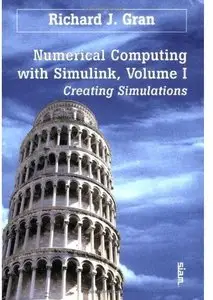Richard J. Gran - Numerical Computing with Simulink, Volume I: Creating Simulations
Published: 2007-11-14 | ISBN: 0898716373 | PDF | 328 pages | 7.42 MB
Simulation is the preferred approach for engineers and scientists who design complex systems because it allows them to test a system design's performance standards. This book explores simulation, starting with Galileo and ending with the lunar landing. It provides an introduction to computer-aided system design with Simulink®, a robust, accurate, and easily used simulation tool. The author takes readers on a tour of the Simulink environment that shows how to develop a system model and execute the design steps needed to make the model into a functioning design laboratory. Included along the way is the mathematics of systems: difference equations and z-transforms, ordinary differential equations (both linear and nonlinear) and Laplace transforms, and numerical methods for solving differential equations. Volume II will show how to use Simulink in the modeling and analysis of complex systems. Because specific applications require specific tools, the author introduces additional software packages that work within the Simulink environment. The Signal Processing Blockset® extends Simulink into the areas of both analog and digital signal processing; Stateflow® is used for state charts and signal flow for modeling event-driven systems; SimPowerSystems® handles physical modeling, in particular the modeling of electrical circuits including power systems, motor drives, power generation equipment, and three-phase power transmission lines; and SimMechanics® develops models of mechanical systems such as robots. In all, the author covers more than 70 applications taken from several disciplines, and he describes numerous tested, annotated, and reusable models and blocks to help readers apply the book s material to their own applications. The text's supplementary Web page offers additional material about Simulink and its associated tools created by The MathWorks and the author.



